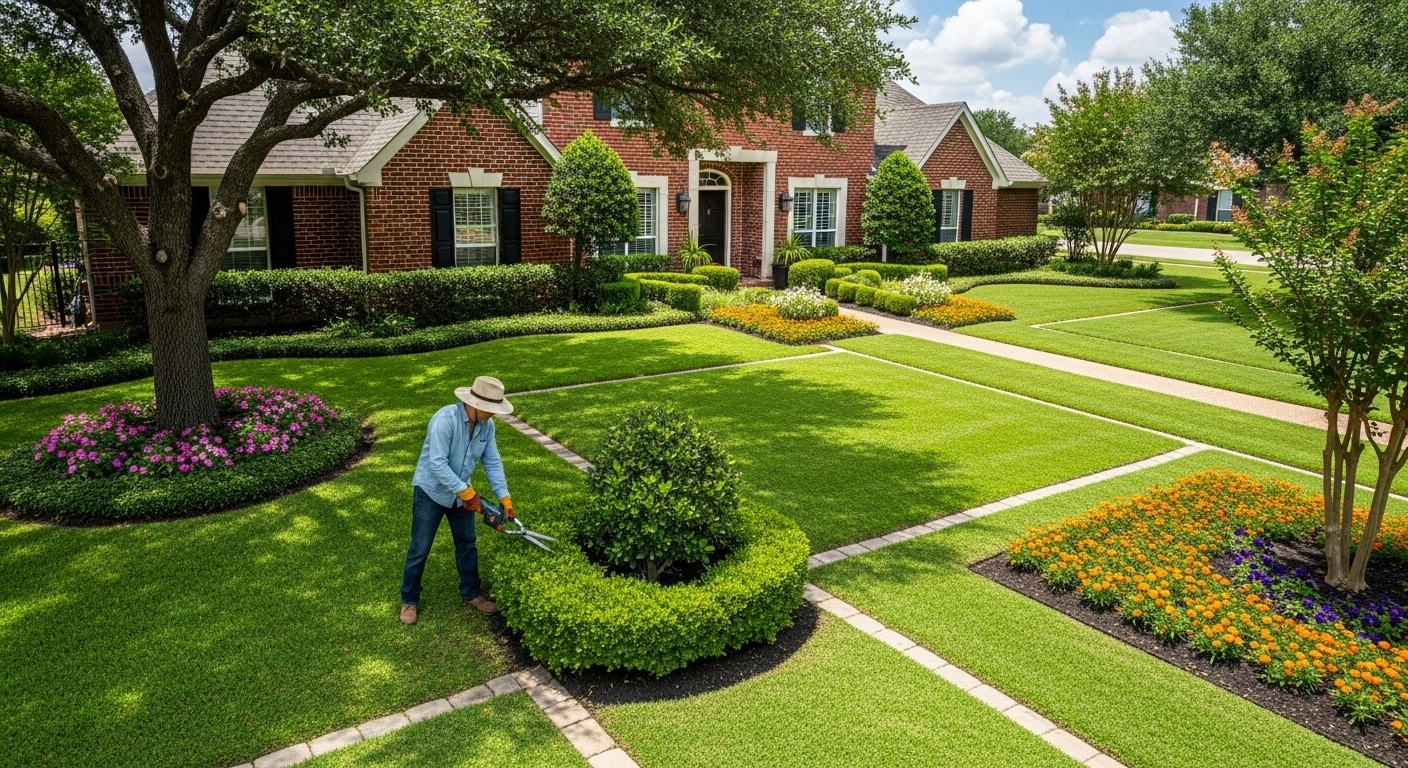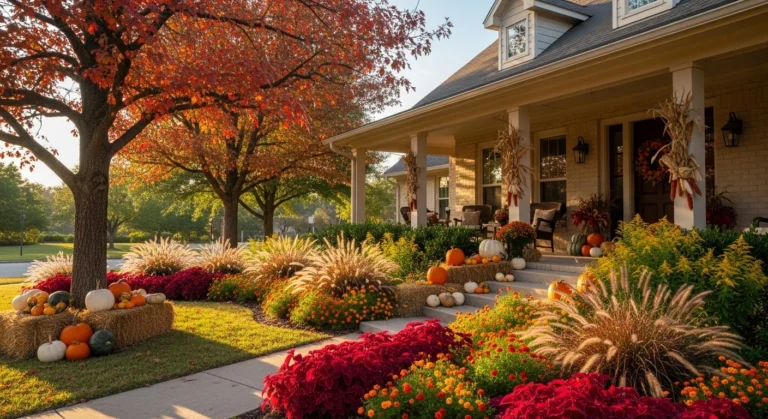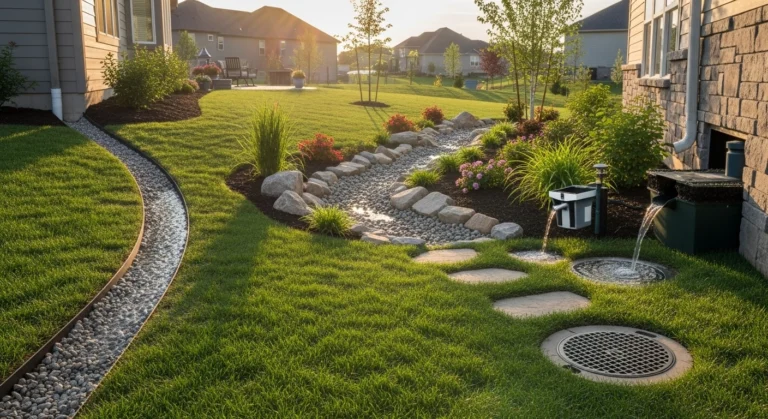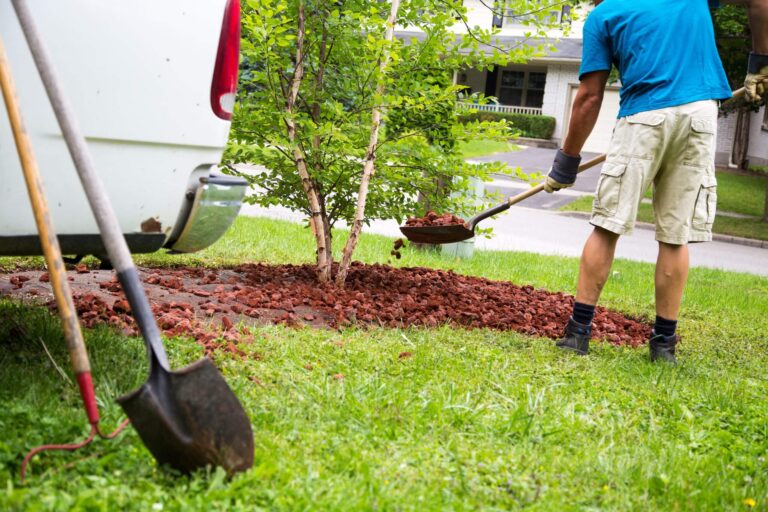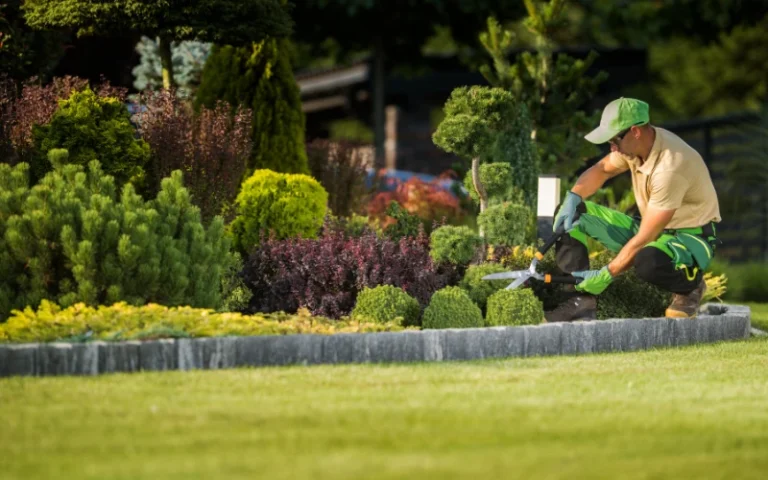Standing in your yard with pruning shears in hand, you’re faced with the same overwhelming question that haunts homeowners across Lubbock every season: “When exactly am I supposed to cut this thing, and what happens if I get it wrong?” You’ve probably heard conflicting advice from neighbors, read contradictory information online, and maybe even made some expensive mistakes that taught you the hard way that timing really does matter when it comes to pruning. The frustration is real – prune your spring-flowering shrubs at the wrong time and kiss goodbye to this year’s blooms, trim your trees during the wrong season and invite disease problems that could kill them entirely. After nearly 20 years of helping West Texas homeowners navigate the confusing world of plant pruning, I can tell you that the fear of making costly mistakes keeps more people from properly maintaining their landscapes than any other single factor.
But here’s the truth that will change how you think about pruning forever – it’s not nearly as complicated as the internet makes it seem, and the “perfect” timing windows are much more forgiving than most people believe. The secret isn’t memorizing dozens of specific dates or becoming a botanical expert; it’s understanding a few key principles about how plants grow and responding to what your specific plants are telling you in your own yard. Our Lawn Care Lubbock approach focuses on reading plant signals and working with West Texas seasonal patterns rather than following rigid calendar schedules that don’t account for our unique climate conditions. Once you understand the basic “why” behind pruning timing, the “when” becomes intuitive, and you’ll develop the confidence to maintain your landscape properly without constantly second-guessing every cut. By the end of this guide, you’ll have a clear roadmap that takes the guesswork out of pruning decisions and helps you create the healthier, more beautiful landscape you’ve been working toward.
Why Pruning Timing Matters More Than Technique
Timing isn’t just about convenience – it’s about working with your plants’ natural energy cycles rather than fighting against them. Plants allocate energy differently throughout the year, moving resources from roots to shoots, storing energy for winter survival, or preparing for spring growth spurts. Prune at the right time, and you’re helping your plants use their energy efficiently; prune at the wrong time, and you’re essentially asking them to waste precious resources on growth they can’t sustain.
The economic impact of poor pruning timing hits homeowners hard. We’ve documented cases where improper timing led to complete plant loss, requiring expensive replacements that could have been avoided with basic timing knowledge. More commonly, wrong-time pruning reduces flowering, weakens plant structure, and creates ongoing maintenance problems that compound year after year.
West Texas climate adds unique challenges to pruning decisions because our weather patterns don’t follow textbook seasonal transitions. We can have 80-degree days in December followed by hard freezes in March, making timing decisions more critical and less predictable than in more stable climates.
Our Seasonal Landscape maintenance data shows that properly timed pruning reduces plant stress by 60% and significantly improves long-term plant health compared to random-timing maintenance approaches.
Understanding Plant Growth Patterns for Better Timing
How Plants Store and Use Energy
Every plant operates on an energy budget that determines when it can handle the stress of pruning and when it needs to focus resources on survival or growth. Understanding these energy cycles is the key to timing pruning for maximum benefit rather than inadvertent harm.
Spring represents the high-energy spending season when plants use stored winter reserves to fuel new growth, flowering, and leaf development. This is when most plants can handle moderate pruning stress because they have abundant energy for recovery and healing.
Summer becomes the energy conservation period in our West Texas climate, when plants focus resources on surviving heat and drought rather than growth and recovery. Major pruning during this time forces plants to waste precious resources on wound healing when they should be conserving energy for survival.
Your plant energy calendar:
- Late winter/early spring – Peak energy reserves available for healing and new growth
- Mid to late spring – Active growth period, good for light pruning and shaping
- Summer – Energy conservation mode, avoid major pruning during heat stress
- Fall – Energy storage period, focus on cleanup rather than major cutting
Fall pruning timing depends on plant type – some species benefit from fall pruning while others should wait until dormancy to avoid stimulating tender growth vulnerable to winter damage.
Reading Your Plants’ Signals
Your plants communicate their readiness for pruning through observable changes in growth patterns, dormancy status, and seasonal behavior. Learning to read these signals is more reliable than following calendar dates that don’t account for yearly weather variations.
Dormancy indicators include leaf drop on deciduous plants, cessation of new growth, and the hardening off of current-year wood. These signals tell you when plants have shifted into energy storage mode and can handle pruning without wasting resources on inappropriate new growth.
Active growth signals show when plants are ready to respond positively to pruning through rapid healing and beneficial new growth. Look for swelling buds, emerging leaves, and resumption of growth after winter dormancy.
Signs your plants are ready for pruning:
- Deciduous plants – Complete leaf drop and visible dormancy
- Evergreen plants – Cessation of active growth and hardened new growth
- Spring bloomers – Immediately after flowering when energy shifts to next year’s buds
- Summer bloomers – During dormancy when energy reserves are highest
Weather pattern awareness becomes crucial in West Texas because unusual warm spells can break dormancy early, making plants vulnerable to subsequent cold damage if pruned inappropriately.
The Lubbock Pruning Calendar by Season
Winter Pruning (December – February)
Winter represents prime pruning season for most landscape plants because they’re fully dormant and won’t waste energy on inappropriate new growth. Cold weather also means fewer disease organisms are active, reducing the risk of infection through pruning wounds.
Focus on structural work during winter months – removing dead, damaged, or poorly positioned branches that affect plant health and appearance. This is also the best time for major shaping and size reduction that would be too stressful during active growing periods.
Avoid pruning spring-flowering plants during winter months because you’ll remove this year’s flower buds that were set last summer. These plants should be pruned immediately after flowering instead.
Winter pruning priorities:
- Shade trees – Remove dead branches, correct structural problems, reduce size if needed
- Summer-flowering shrubs – Major shaping and size reduction while fully dormant
- Fruit trees – Remove diseased wood, improve air circulation, maintain productive structure
- Dormant perennials – Cut back dead material, but leave ornamental grasses until spring
Temperature considerations matter even during winter pruning – avoid working when temperatures are below 20°F or when plants are ice-covered, as branches become brittle and can shatter instead of cutting cleanly.
Spring Pruning (March – May)
Early spring offers ideal conditions for most pruning activities because plants are emerging from dormancy with maximum energy reserves for healing and recovery. This is when you can be most aggressive with necessary pruning while still giving plants the entire growing season to recover.
Time spring pruning carefully based on plant type and flowering schedule. Spring-blooming plants should be pruned immediately after flowering ends, while summer bloomers can be pruned before active growth begins.
Watch for late freeze risks during March and early April – pruning can stimulate new growth that’s vulnerable to late cold snaps. Monitor weather forecasts and delay pruning if temperatures will drop below 28°F within two weeks of planned work.
Spring pruning schedule:
- Early March – Summer-flowering shrubs, non-flowering evergreens, dormant perennials
- After flowering – Forsythia, flowering quince, early-blooming ornamentals
- Late April/May – Tender plants after last frost risk passes
- Avoid – Plants that haven’t broken dormancy yet, recently transplanted material
Spring cleanup pruning focuses on removing winter damage, dead material, and growth that emerged from Winter Landscape protection efforts.
Summer Pruning Considerations (June – August)
Summer pruning should be minimal in West Texas climate because plants are focusing energy on surviving heat stress rather than healing wounds and producing new growth. However, some light maintenance pruning becomes necessary for safety and plant health.
Focus on urgent needs only during summer months – removing dead or hazardous material, light shaping of fast-growing plants, and deadheading to encourage continued flowering. Major structural work should wait until dormant seasons.
Timing within summer matters – early morning or late evening work reduces stress on both plants and gardeners. Never prune during the hottest part of the day when plants are already stressed from heat.
Summer pruning limitations:
- Light deadheading of flowering plants to encourage continued blooming
- Removal of dead or hazardous branches that can’t wait until dormant season
- Minimal shaping of fast-growing hedges and shrubs, but avoid major cuts
- Avoid – Heavy pruning, major size reduction, structural work on stressed plants
Connect summer pruning to your overall Summer Landscaping strategy by minimizing plant stress and focusing on maintenance that supports heat survival.
Fall Pruning Strategy (September – November)
Fall pruning timing depends on plant type and your specific goals for the landscape. Some plants benefit from fall pruning, while others should wait until full dormancy to avoid stimulating growth that won’t harden off before winter.
Early fall works well for removing dead material, light cleanup, and preparing plants for winter weather. This connects directly to your Fall Landscape preparation activities.
Late fall pruning should focus on safety and cleanup rather than major shaping or size reduction that could stimulate new growth vulnerable to winter damage.
Fall pruning guidelines:
- September – Light cleanup, deadheading, removal of diseased material
- October – Perennial cutback after natural die-back begins
- November – Safety pruning, winter protection preparation
- Avoid – Major shaping that stimulates new growth before winter
Document pruning activities during fall cleanup to plan next year’s pruning schedule and track which timing worked best for specific plants in your landscape.
Plant-Specific Pruning Schedules
Flowering Trees and Shrubs
Spring-blooming plants require completely different timing than summer bloomers because of when they set their flower buds. This is where most homeowners make expensive mistakes that cost them a full year of flowering.
Spring bloomers like forsythia, flowering quince, and lilac set next year’s flower buds shortly after this year’s blooms fade. Prune them immediately after flowering ends – usually April or May – to avoid removing next year’s flowers.
Spring-blooming plant schedule:
- Immediately after flowering – Forsythia, flowering quince, lilac, spring-flowering spiraea
- Late spring – Azaleas, rhododendrons, early-flowering ornamental trees
- Never in winter – Any plant that blooms before June typically blooms on old wood
Summer-blooming plants can handle winter pruning because they flower on current-year growth. These plants actually benefit from late-winter pruning that stimulates vigorous new growth for better flowering.
Summer bloomers include crape myrtles, roses, buddleia, and late-season perennials that can be pruned during dormancy for best results.
Evergreen Trees and Shrubs
Evergreens require different timing considerations because they don’t go fully dormant like deciduous plants. They slow growth during winter but continue some metabolic activity year-round.
Late winter through early spring represents optimal timing for evergreen pruning because plants are entering their active growth phase and can quickly heal pruning wounds while producing new growth to fill in gaps.
Avoid fall pruning of evergreens in West Texas because new growth stimulated by pruning won’t have time to harden off before potential winter damage occurs.
Evergreen pruning timing:
- February-March – Pines, spruces, firs before active growth begins
- After new growth hardens – Wait until spring growth matures before shaping
- Light pruning only – Evergreens don’t regenerate from old wood like deciduous plants
- Never top – Evergreens don’t recover well from severe pruning
Connect evergreen care to your Spring Landscape preparation by timing pruning to support healthy spring growth rather than winter stress.
Fruit Trees and Productive Plants
Fruit tree pruning timing affects both plant health and production quality. Poor timing can reduce fruit production, invite disease problems, or create structural weaknesses that lead to branch breakage during heavy crop years.
Late winter pruning works best for most fruit trees because you can see the branch structure clearly and make cuts that promote good airflow and light penetration throughout the canopy.
Summer pruning has specific applications for controlling tree size and promoting fruit production, but requires more expertise to avoid reducing next year’s crop.
Fruit tree pruning calendar:
- January-February – Stone fruits (peaches, plums) during full dormancy
- February-March – Apple and pear trees before bud break
- After harvest – Light summer pruning to control size and remove water sprouts
- Avoid – Late fall pruning that can delay dormancy and increase winter damage risk
Disease prevention timing becomes critical with fruit trees – never prune stone fruits during wet weather when bacterial diseases spread rapidly through fresh cuts.
Common Pruning Timing Mistakes
Pruning spring bloomers at the wrong time represents the most expensive mistake homeowners make because it eliminates flowering for an entire year. These plants set flower buds shortly after blooming, so fall or winter pruning removes all the buds that would produce next year’s flowers.
Late fall pruning that stimulates new growth creates winter damage problems when tender new shoots can’t harden off before cold weather arrives. This timing mistake can actually kill plants that would otherwise survive winter successfully.
Summer stress pruning forces plants to waste energy on healing wounds when they should be conserving resources for heat survival. Major summer pruning often leads to poor plant performance for multiple seasons.
Timing mistakes to avoid:
- Spring bloomers in winter – Eliminates current year flowering potential
- Heavy fall pruning – Stimulates growth vulnerable to winter damage
- Major summer cuts – Forces energy waste during heat stress periods
- Wet weather pruning – Promotes disease spread through fresh wounds
Ignoring weather patterns specific to West Texas leads to timing decisions based on calendar dates rather than actual plant and climate conditions.
Tools and Techniques for Different Plant Types
Choosing the Right Tools
Tool selection affects both pruning success and plant health because clean, sharp cuts heal faster and resist disease better than ragged wounds made with inappropriate or dull tools.
Hand pruners work best for branches up to 3/4 inch diameter and provide the most control for precise cuts. Bypass pruners make cleaner cuts than anvil types and cause less crushing damage to plant tissues.
Essential pruning tool kit:
- Bypass hand pruners – Clean cuts on branches up to 3/4 inch diameter
- Loppers – Longer handles provide leverage for branches up to 1.5 inches
- Pruning saw – Clean cuts on larger branches that loppers can’t handle
- Pole pruner – Reach high branches without ladder work
Tool maintenance directly affects plant health – clean, sharp tools make healing wounds while dull or dirty tools create ragged cuts that invite disease problems.
Making Proper Cuts
Cut placement and angle determine how well wounds heal and whether plants develop structural problems from improper pruning. Understanding basic cutting techniques prevents long-term damage from well-intentioned maintenance.
The three-cut method prevents bark stripping on large branches by removing weight before making the final cut. This technique prevents the tearing damage that can kill entire branches or invite disease problems.
Cut angles and placement should promote water drainage from wounds while preserving the branch collar that contains healing hormones. Never make flush cuts that remove this critical healing tissue.
Proper cutting guidelines:
- Cut just outside the branch collar – Never make flush cuts against the trunk
- Angle cuts to shed water – Prevent moisture accumulation in wounds
- Use three-cut method – Prevent bark stripping on branches over 2 inches diameter
- Clean tools between plants – Prevent disease spread through contaminated equipment
Wound dressing is unnecessary for most pruning cuts – plants heal better when cuts are left exposed to air rather than covered with artificial materials.
Connecting Pruning to Year-Round Plant Health
Pruning timing coordinates with other seasonal care to maximize plant health and landscape beauty throughout the year. Isolated pruning efforts without considering overall plant needs often produce disappointing results.
Spring pruning should complement your Spring Landscape preparation by removing winter damage and shaping plants for optimal growing season performance.
Seasonal pruning schedules work best when integrated with fertilization timing, watering schedules, and pest management programs that support overall plant health rather than just addressing individual maintenance needs.
Your year-round pruning integration:
- Coordinate with fertilization – Avoid heavy feeding immediately after major pruning
- Support seasonal stress management – Time pruning to minimize plant stress during challenging seasons
- Document results – Track which timing produced best results for future reference
- Professional consultation – Complex trees and valuable specimens may warrant Landscaping Services expertise
Building pruning skills gradually produces better long-term results than attempting to master all techniques immediately. Start with basic cleanup and timing, then develop more advanced skills as you gain experience with your specific plants.

